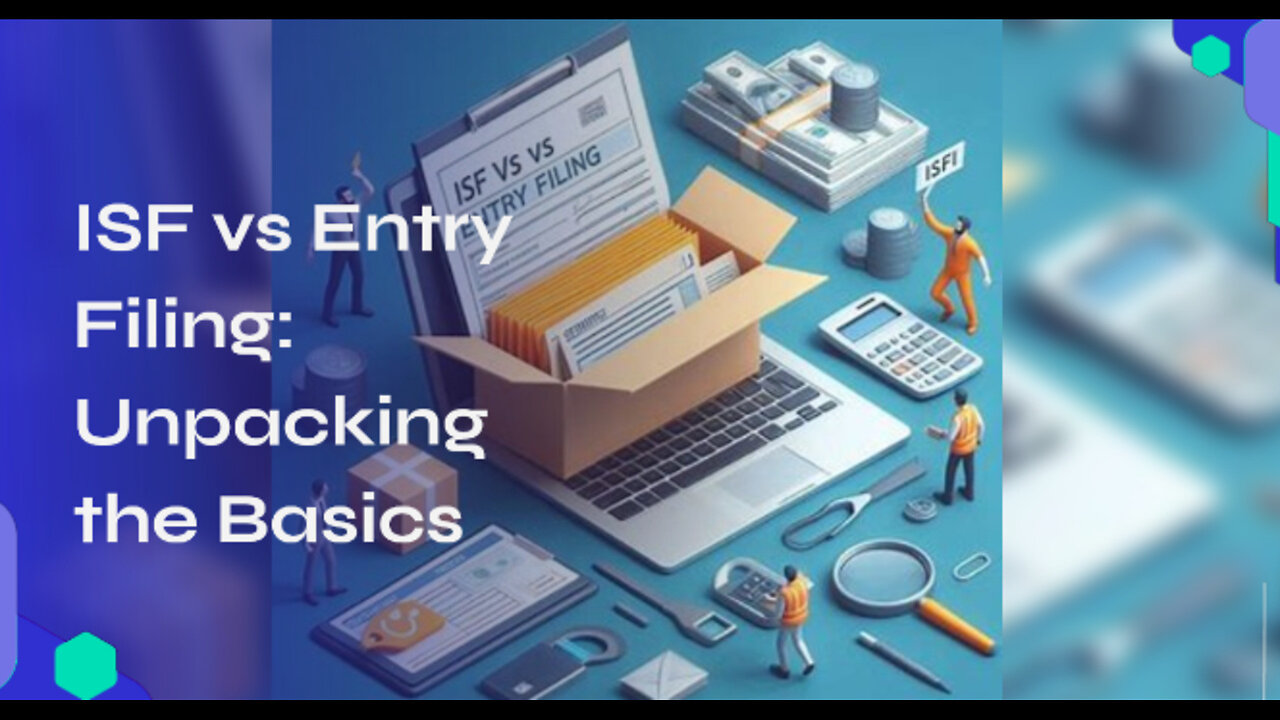Premium Only Content

Mastering Customs Filing: ISF vs. Entry Filing Explained!
ISF Filer || isf@isffiler.com || 858-280-9374 || www.isffiler.com
In this episode of our customs brokerage series, we delve into the difference between ISF filing and entry filing, two important requirements for importers when dealing with US Customs and Border Protection (CBP). ISF filing, or Importer Security Filing, must be completed before goods are loaded onto a vessel bound for the United States. The purpose of ISF filing is to assess potential risks associated with inbound cargo and verify the data provided by the importer. We discuss the 10 key data elements required in an ISF filing. On the other hand, entry filing is the process of providing necessary documentation and paying applicable duties and fees to CBP, allowing goods to formally enter the United States. Entry filing takes place after the goods have arrived at the port of entry and the ISF filing has been completed. We explore the information required for entry filing and emphasize the importance of compliance with these requirements to avoid penalties, cargo holds, and delays. It is advisable to work with a reliable customs brokerage company to navigate the complexities of filing requirements and ensure a smooth import process.
#usimportbond
#isfcustomsbroker
#uscustomsclearing
#isfentry
Video Disclaimer Here: This video is intended for educational purposes and has no affiliation with US government entities.
00:36 ISF Filing: ISF filing is a requirement by U.S. Customs and Border Protection for importers before goods are loaded onto a vessel bound for the United States. It helps assess potential risks and verifies data provided by the importer.
01:47 Entry Filing: Entry filing is the process where an importer provides necessary documentation and pays duties and fees to CBP, allowing goods to formally enter the U.S. It occurs after goods arrive at the port of entry and ISF filing is completed.
02:19 Key Information: ISF filing requires 10 data elements including seller information, buyer information, country of origin, HTS number, and more. Entry filing requires information such as importer of record, bill of lading number, port of entry, value of goods, and customs duties payment.
02:42 Differences: ISF filing must be completed 24 hours before the vessel departs from the last foreign port, while entry filing is done after goods arrive at the port of entry. Compliance with both filing requirements is crucial to avoid penalties, cargo holds, and delays in goods release.
-
 LIVE
LIVE
The Rubin Report
27 minutes agoCNN Panel Clashes Over Kash Patel’s Aggressive Move That Some Say Goes Too Far
2,235 watching -
 LIVE
LIVE
Benny Johnson
47 minutes agoDark TRUTH About Deadly DC Crash REVEALED: Female Army Pilot REFUSED Orders! 'Intentional'
4,892 watching -
 LIVE
LIVE
The Big Mig™
4 hours agoAutoPenGate Lock Em Up, Arrests Coming!
4,370 watching -
 1:00:39
1:00:39
VINCE
2 hours agoThe Mass Deportations Have Begun | Episode 31 - 04/28/25
64.8K61 -
 DVR
DVR
VSiNLive
1 hour agoA Numbers Game with Gill Alexander | Hour 1
8 -
 LIVE
LIVE
LFA TV
13 hours agoALL DAY LIVE STREAM - 4/28/25
3,711 watching -
 32:37
32:37
Rethinking the Dollar
43 minutes agoBlackout Spreads In Europe: Accident or WARNING? | Morning Check-In
-
 LIVE
LIVE
Caleb Hammer
38 minutes agoFinancial Audit's Biggest Crashout
98 watching -
 LIVE
LIVE
Bannons War Room
2 months agoWarRoom Live
17,286 watching -
 LIVE
LIVE
Badlands Media
6 hours agoBadlands Daily: April 28, 2025
5,768 watching